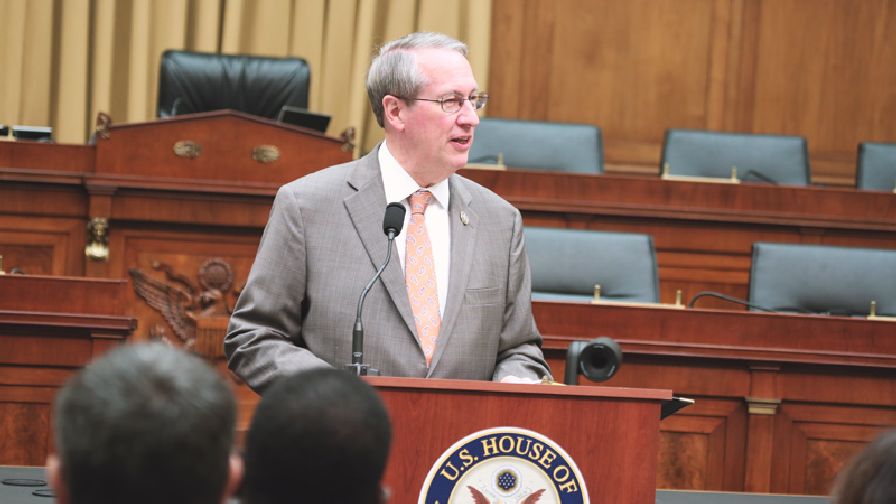After a Delay, H-2C Is Getting a Committee Review

Rep. Bob Goodlatte (R-VA) is Chairman of the House Judiciary Committee and introduced the Ag Worker Act.
After a three-week delay, the full House Judiciary Committee held a review of the new H-2C bill on Wednesday, Oct. 25.
Introduced by Judiciary Chairman Bob Goodlatte (R-VA), HR 4092, or the Ag Worker Act, must pass Committee review if it has any chance of advancing to the House floor.
UPDATE: HR 4092 passed the House Judiciary Committee with a vote of 17 to 16.
Most agricultural groups are in favor of the bill, which aims to update the current H-2A program.
“We are encouraging the committee to move this legislation forward and pass the bill,” says Robert L Guenther, Senior Vice President, Public Policy for United Fresh Produce Association. “We strongly believe this may be the only opportunity to get agriculture immigration legislation considered as part of a larger immigration package that could be considered in the next several months by Congress.”
Several Significant Changes Have Been Made
After initially introducing the bill in early October, Rep. Goodlatte modified some aspects of his original bill:
- H-2C would not be available until six months after enactment. Undocumented workers would not be protected from deportation in the interim.
- Originally, the bill had a cap of 500,000 workers above those already accepted into the program. Goodlatte lowered the cap to 450,000, with 40,000 visas for meat processing and 410,000 visas for the remainder of agricultural jobs.
- H-2C workers will gain health insurance coverage;
- The Department of Homeland Security will maintain all current duties and enforcement responsibilties it has under H-2A. The original version of the bill propsed moving all duties to USDA.
Why Some Strongly Oppose the Bill
The House Judiciary ranking member, Rep. John Conyers (D-MI), and other committe members strongly opposed the bill. Their main objections were:
- The bill’s wage provision. Rep. Conyers fears workers in some parts of the country could lose up to $5 per hour less than they are currently making. He also fears most American meat packing employees will be laid off in favor of foreign workers.
- Eliminating employers’ requirement to provide housing and transportation adds significant costs to workers, further eroding their income.
- Rep. Conyers belives adding forestry-related jobs and the meat and poultry industries expands the term “agriculture” too far.
Other Changes H-2C Makes to H-2A
As a reminder, here are some of the changes the Ag Worker Bill will make to H-2A that haven’t already been mentioned:
Who’s included. H-2C aims to consolidate all food-related guest ag workers under one system. So all workers who would qualify for H-2A are included, as are those produce-related workers in H-2B and other groups previously not included, such as dairy and fishery workers.
Employment status. H-2C would includes both contract and at-will terms. H-2A, in constrast, allows only contract work. Also, under the proposed bill, workers will be able to move from farm to farm, following the need for workers.
Duration in U.S. seasonal guestworkers can stay within the U.S. for 18 months before needing to return to their home country. The amount of time required to remain in their home country will equal 1/12 of the durations of the previous authorized time in the U.S., or 45 days.
Legal status. H-2C does not lead to citizenship, but does give workers a legal status in the U.S.
American Workers Rule. Growers would still be required to recruit American employees before filling the vacancies with H-2C workers. But they will not be forced to hire workers once guest workers have arrived.
Supervising Agency. The bill would move agricultural guestworker programs from the Labor Department to USDA.









